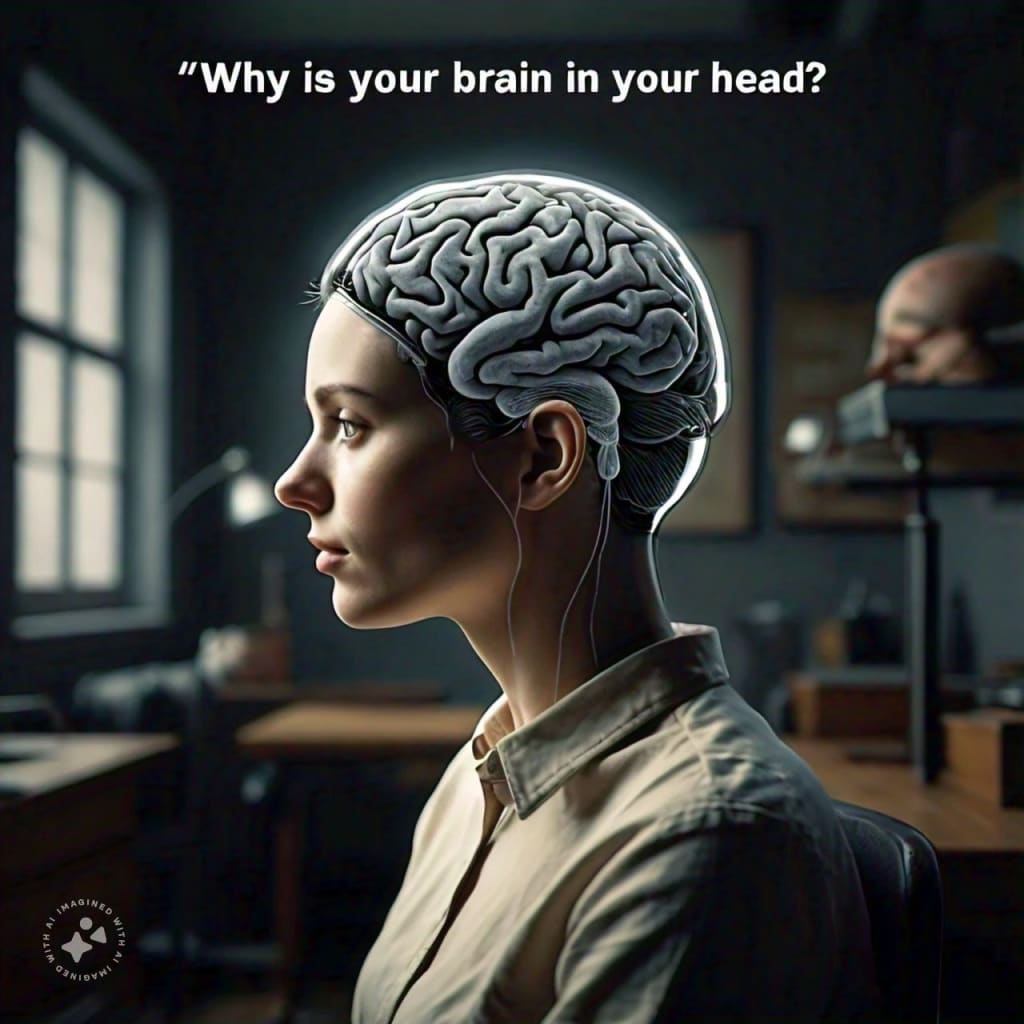
Why your brain is in your head
In the animal kingdom, brains are typically housed within heads. Considering their crucial role, one might expect evolution to offer more protection. It seems odd that our most vital organ is encased in such a fragile shell, vulnerable to everyday hazards like low door frames or fast-moving objects. Yet, when pondering human anatomy, many aspects defy immediate logic: we breathe and eat through the same passage, grow more teeth than we can accommodate, and positioned our playground next to the waste disposal site.
To unravel this story of the brain, we'll need some assistance and a return to the origins. Enter BrainCraft! Initially, early animals lacked brains, heads, or much complexity. However, they did possess a sense of direction. Around 550 million years ago, animals with bilateral symmetry emerged from those with radial symmetry. Radially symmetrical creatures like jellyfish have only two axes — from head to tentacles and outward from the center, giving them a somewhat two-dimensional quality. Bilaterally symmetrical animals introduced a new dimension. They could now distinguish top from bottom, and front from rear, opening up a realm of new possibilities.
In all bilateral animals, a common set of genes orchestrates the organization from head to tail. These genetic conductors, known as Hox genes, oversee a complex developmental process involving hundreds of other genes. They dictate where the head forms and where the tail emerges in an embryo. Hox genes are arranged in clusters on chromosomes, reflecting the sequence of body parts they influence. This fundamental blueprint is nature's foundation for constructing a diverse array of creatures, ranging from nematodes to ordinary toads, from water bears to polar bears, and from humans to honeybees.
The Hox genes in complex animals such as humans and mice are not fundamentally different from those in flies; we simply possess more of them. Throughout our evolutionary path, these genetic architects were duplicated, allowing the surplus copies to specialize and shape new anatomical structures.
In early animals, what began as disordered clusters of nerves evolved into organized pathways extending from head to tail, although they lacked a central nervous system, brains, or intricate spinal cords. Initially, the nervous system consisted of basic wiring running from front to back.
Interestingly, the development of "brain" necessitated the presence of eyes. For creatures engaged in feeding, having eyes located at the front end where food enters proves advantageous — the alternative is far less agreeable.
Animals began concentrating their eyespots and other sensory organs near their feeding ends, prompting nerves to cluster in these regions — the initial stages of brain formation. The evolution of eyes occurred independently in various lineages of life. Along these evolutionary branches, bodies and nervous systems gradually became more intricate.
As these primitive brains gained strength and importance, one lineage of animals began shielding their central nerve cord with a protective sheath. Over time, as sensory organs such as eyes and scent receptors became more refined, the brains that interpreted their signals also grew in complexity. This transformation highlighted their newfound significance, warranting protective measures.
The craniates, a group of animals, began protecting their nerve cords with skulls, initially made of cartilage and later of bone. The development of hardened skulls coincided with the evolution of more powerful jaws, prompting some species to develop fins for enhanced mobility and escape capabilities. This evolutionary competition spurred the emergence of increasingly bony structures.
Ancestral craniates might have had a motto akin to Daft Punk's "Harder, Better, Faster, Stronger," as they adapted to new challenges. The earliest vertebrates to transition onto land diversified into a wide array of creatures, from dinosaurs to dogs, while retaining a fundamental body plan: a brain housed within a skull, positioned near the feeding end alongside sensory organs. This anatomical blueprint explains the relatively limited variation in vertebrate shapes.
Evolution resembles Taco Bell in its ability to create numerous forms using a core set of ingredients. This process laid the groundwork for placing our brains in our heads. Now, let's harness this remarkable tool and explore how it continues to evolve. Stay curious.
About the Creator
Hikmah
A philanthropist in the making
Enjoyed the story? Support the Creator.
Subscribe for free to receive all their stories in your feed. You could also pledge your support or give them a one-off tip, letting them know you appreciate their work.






Comments
There are no comments for this story
Be the first to respond and start the conversation.